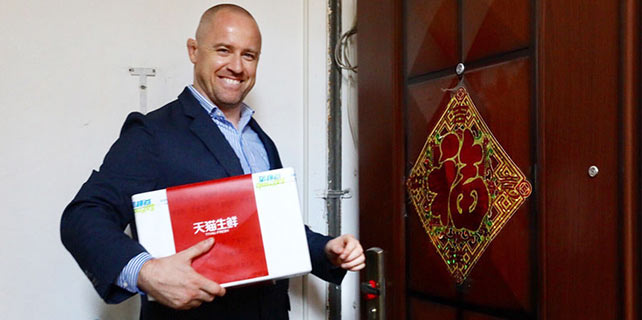Nation's futuristic space plan aims high
Chinese space scientists are developing the Long March 8 medium-lift carrier rocket and Long March 9 superheavy rocket, and will design a series of futuristic vehicles to allow space tourism, exploitation of asteroid resources and space-based solar power stations.
According to a development plan from the China Academy of Launch Vehicle Technology, the major developer of Chinese carrier rockets, the Long March 8 will conduct its first flight in 2020 and will start to offer low-cost launch service to clients. The Long March 9, the heaviest and most sophisticated model that is under development, will first be used around 2030 to enable China to carry out manned lunar explorations and robotic round trips to Mars to bring samples back.
The academy, part of China Aerospace Science and Technology Corp, released the plan on Thursday to mark its 60th anniversary.
Li Tongyu, head of carrier rocket development at the academy, said Long March 8 will have a modular design and will use engines that have been used by the Long March 5 and Long March 7, both new-generation rockets made by the academy.
The rocket's core stage will be developed based on that of the Long March 7. The rocket will have two 2-meter-diameter, liquid-propelled boosters and will be capable of sending about 4.5 metric tons of payload to a sun-synchronous orbit or 2.5 tons to a geosynchronous transfer orbit, according to Li.
Long Lehao, an eminent rocket scientist and academician at the Chinese Academy of Engineering, told China Central Television that Long March 9 will have a diameter of 10 meters and will be propelled by the most powerful engines-the 500-metric-ton-thrust liquid oxygen/kerosene engine and the 220-ton-thrust liquid oxygen/liquid hydrogen engine, both of which are being designed by Chinese engineers.
Designers at the academy said the superheavy Long March 9 will have a liftoff weight of 3,000 tons and can thrust a 140-ton payload to a low Earth orbit, which means the nation will be able to transport its astronauts to the moon.
Currently, the mightiest Chinese rocket is the Long March 5, which has a liftoff weight of 870 tons and a maximum payload capacity of 25 tons to a low Earth orbit. It is capable of sending large unmanned probes to the moon but is not sufficiently strong to transport astronauts there.
The academy has also begun to develop reusable rockets and spacecraft, according to an insider.
Qin Xudong, a chief designer at the academy, said engineers are researching a reusable, winged spacecraft that will be vertically blasted off like a typical rocket but will make a horizontal landing on a runway like a plane. The spacecraft will be put into service around 2025 and will be used to ferry travelers to make suborbital spaceflight at altitudes ranging from 20 to 100 kilometers.
In 2035, the first generation of Chinese reusable rockets will start to become operational, and in 2040, a series of next-generation rockets will come into being and will be more advanced in terms of automation and engine capability, according to Qin.




















